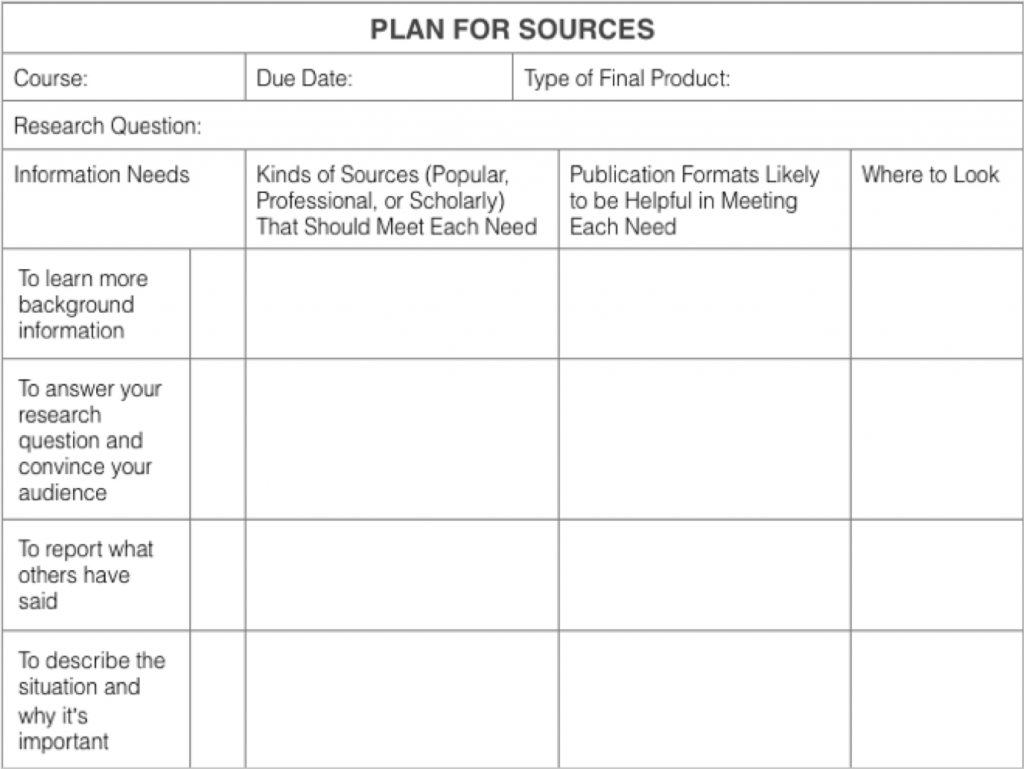Okay, so once you know what kinds of sources you need to meet your information needs, where should you look for them? Once more, thinking about categories can help.
Where sources are located is generally organized by audience expertise level—by whether they are popular, professional, or scholarly sources. Popular and professional are often grouped together. But scholarly sources tend to hang out by themselves. That’s why searching Google Scholar locates more of them than just plain old Google, and an academic library has more scholarly sources than a public library.
Even if you are not using our planning table, before you start looking, try the Plan for Sources table below along with the suggestions made in this section to think through what sources you’ll need for your own research project. There’s also an example plan for sources filled in for a term paper. Having your Plan for Sources always at your side while you search for sources will guide where you look and what you’re willing to accept. It will help you keep track of whether you have found the right resources.

Thinking through the types of sources you need to meet your information needs helps you target your search. You can download the Plan for Sources at this link.
You can download the table at Planning your sources. Using this table doesn’t mean you can’t change your mind if you later find another kind of source that looks too good to pass up. But making a plan first will ensure that you don’t just grab any source you come across. The few minutes you take to complete the table will save you time later. And it’s nice to have a plan all in one place that you can put into action!
Example: Sample “Plan for Sources” Table

Completing the table puts all your planning in one place.

